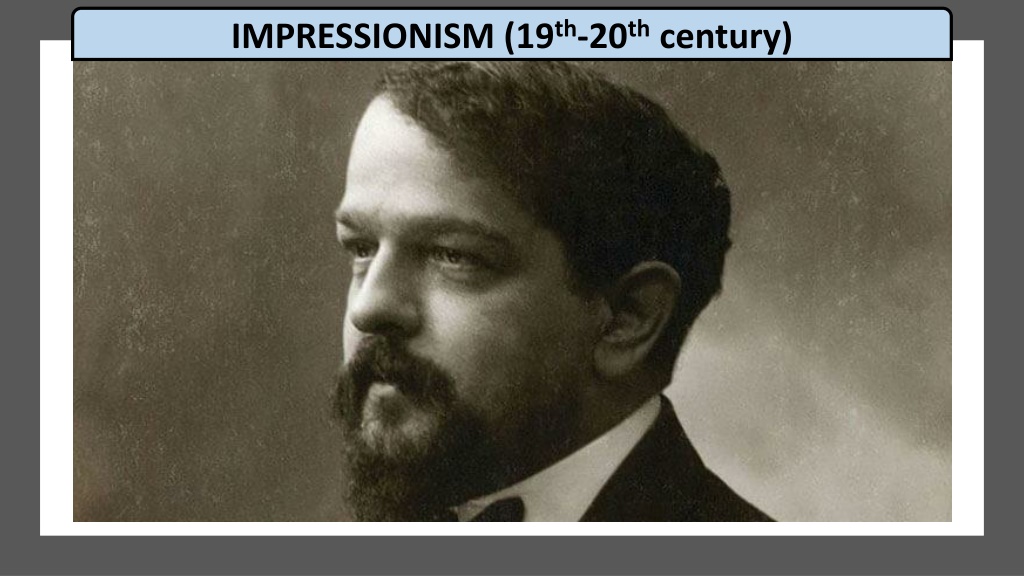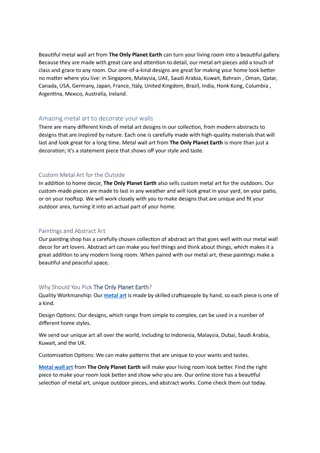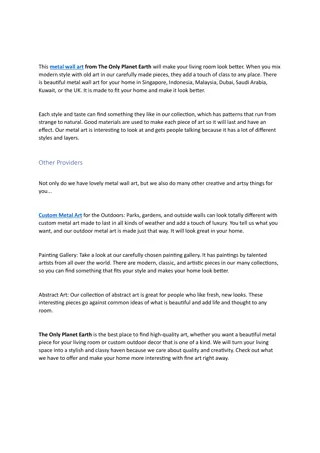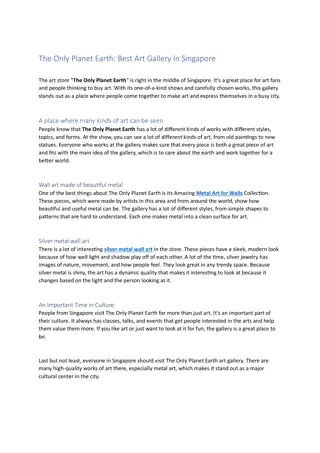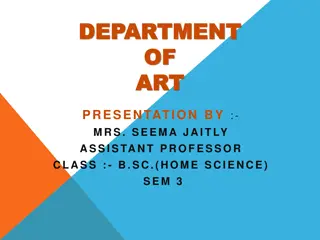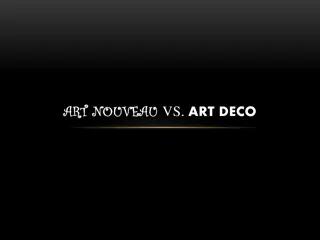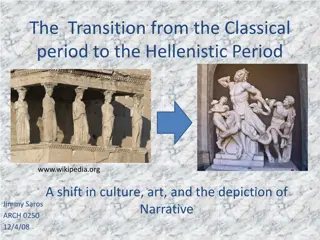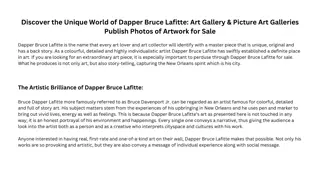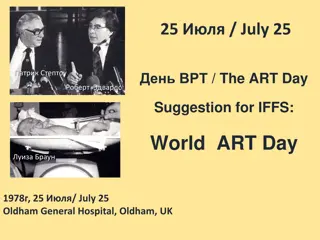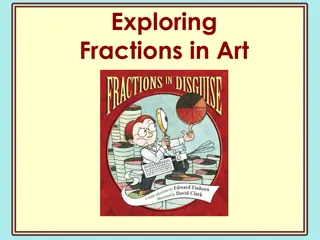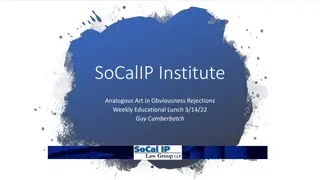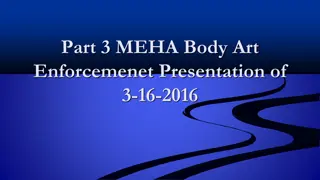Impressionism in Art
Impressionism emerged in 19th-20th century France. Artists like Monet, Degas, and Renoir sought to capture nature's essence rather than realism. The movement influenced music, with Debussy as a key figure, focusing on chromatic effects and static harmony.
Download Presentation

Please find below an Image/Link to download the presentation.
The content on the website is provided AS IS for your information and personal use only. It may not be sold, licensed, or shared on other websites without obtaining consent from the author.If you encounter any issues during the download, it is possible that the publisher has removed the file from their server.
You are allowed to download the files provided on this website for personal or commercial use, subject to the condition that they are used lawfully. All files are the property of their respective owners.
The content on the website is provided AS IS for your information and personal use only. It may not be sold, licensed, or shared on other websites without obtaining consent from the author.
E N D
Presentation Transcript
IMPRESSIONISM (19th-20thcentury) Impressionism is an artistic current that commenced at French art in the 1860s (period of napoleon III's empire), seeking to render, in an appropriate style, as faithfully as possible, the psychic impression of the view of an object found in nature. It took this name after the first exhibition, in 1874, of a group of painters that included Claude Monet, Edgar Degas, Auguste Renoir, Camille Pissarro, Alfred Sisle, Paul C zanne, Armand Guillaumen and Bert Morizo. One of Monet's paintings on display there, entitled "Impression - soleil levant" (Impression-Sunrise) inspired the name in the critics.
IMPRESSIONISM IMPRESSIONISM (19 (19th th- -20 20th thcentury) century) Impression Impression- - Sunrise Sunrise Claude Monet Claude Monet
IMPRESSIONISM (19th-20thcentury) The paintings of the Impressionists with their discrete brushstrokes seemed to many makeshift and unfinished. However, the aim of the Impressionists was not to accurately depict a landscape, but to give them the impression that was generated on them when observing it. Like the exponents of the Barbizon school, the Impressionists painted mainly in the countryside.
IMPRESSIONISM (19th-20thcentury) With regards to music, the main representative of Impressionism was considered to be Claude Debussy with the "Prelude in the Afternoon of a Faunus" (1892), paying particular attention to chromatic effects, premeditated nebulous tonal shapes, static harmony and the avoidance of dramatic dynamism, which is prominent for instance in Beethoven. Other composers who are considered Impressionists are Ravel, Delius, Respigi, Scriabin, etc.
IMPRESSIONISM (19th-20thcentury) Debussy's love for art began in his childhood. He watched an open-air puppet show in the streets of Paris while at the same time he admired Shakespeare and Ibsen. He had even attempted, although unsuccessfully, the writing of a play.
IMPRESSIONISM (19th-20thcentury) Those who support the characterisation of the "impressionist" for Debussy, further argue that the aim of his music is to evoke associative "impressions and special lighting". This means that he did not want to convey specific feelings or ideas, as Impressionism is inextricably linked to the undefined and the mysterious.
IMPRESSIONISM (19th-20thcentury) In 1893 Debussy resorted to the playwright Maeterlinck, asking permission to compose his first and lone opera based on the play "Pelleas and Melissanthi". The premiere of his work took place on April 30, 1902. An atmosphere of mystery prevails in the opera and hidden meanings lurk. The symbolistic poetry by virtue of its freedom, influenced the musical language of the composer.
IMPRESSIONISM (19th-20thcentury) Debussy did not follow his father s footsteps, who wanted him to become a sailor, but he sailed into his own sea and illuminated the sky of the music with the notes he hung for stars. The music owes Debussy much more than any label could describe. Paul Dukas (1865-1935) said in 1901: Mr. Debussy is impossible to categorise. Listening to his music gives the foggy impression of a teenage dream and maybe one afternoon a Faunus will draw near to us to tell us the beginning of modern music .
IMPRESSIONISM (19th-20thcentury) Other representatives of Impressionism: Albert Roussel: French composer, naval officer, who later engaged exclusively with music. He studied until 1898 and became professor of counterpoint from 1902 to 1913. Without being carried away by the strict academicism he was taught at the school, Roussel became prominent mainly in the second decade of the 20th century as a composer, influenced by Debussy.
IMPRESSIONISM (19th-20thcentury) Albert Roussel (1869- 1937)
IMPRESSIONISM (19th-20thcentury) Emilios Riadis: (artistic nickname of Emilios Kouis or Kou). Greek composer. He studied in Thessaloniki as well as in Munich, and for a while he stayed in Paris, where he studied with Maurice Ravel and became associated with the circles of the French Impressionists, who played an important role in shaping his artistic personality. Around 1915 he settled permanently in Thessaloniki, where he was appointed piano teacher of the Conservatory there, of which he later served as deputy director.
IMPRESSIONISM (19th-20thcentury AD) Riadis seems to have engaged with all kinds of music, opera, symphonic music, chamber music, music for piano, etc. However, his eclecticism, up to exaggeration, allowed him to leave nothing but a creative work very fragmentary.
IMPRESSIONISM (19th- 20thcentury AD) Emilios Riadis (Thessaloniki 1886 or 1880-1935) o Apart from his songs, some of which have been published, relatively few of his works are complete.
SOURCES https://impresionismos.wordpress.com/%CE%BC%CE%BF%CF%85%C F%83%CE%B9%CE%BA%CF%8C%CF%82- %CE%B9%CE%BC%CF%80%CF%81%CE%B5%CF%83%CE%B9%CE%BF %CE%BD%CE%B9%CF%83%CE%BC%CF%8C%CF%82/ https://artic.gr/impresionismos/ https://elsito.gr/index.php/arts/item/624-impresionismos https://www.britannica.com/art/Impressionism-music http://lenageorgali.blogspot.com/2014/05/1920.html
